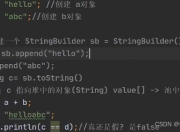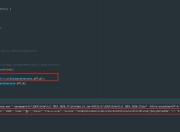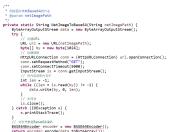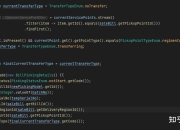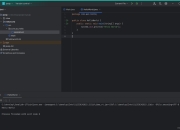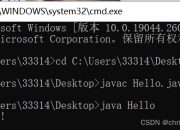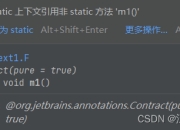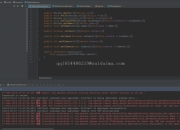在编程世界中,递归是一种强大而优雅的问题解决方法。本文将全面解析Java中的递归技术,带你从基础概念到高级应用,掌握这一核心编程技巧。
一、递归的基本概念
递归(Recursion)是指在函数的定义中使用函数自身的方法。一个经典的递归定义包括两个部分:
1. 基线条件(Base Case):确定递归何时结束
2. 递归条件(Recursive Case):函数调用自身的条件
在Java中,递归方法的典型结构如下:

public returnType methodName(parameters) {
if (baseCaseCondition) {
return baseCaseResult;
} else {
// 处理当前层逻辑
return methodName(modifiedParameters);
}
}
二、递归的工作原理
理解递归的关键在于掌握Java调用栈(Call Stack)的工作机制。每次方法调用时,Java虚拟机都会在调用栈中创建一个新的栈帧(Stack Frame),包含方法的参数、局部变量和返回地址。递归调用会不断向栈中添加新的帧,直到达到基线条件才开始逐层返回。

三、经典递归算法实现
1. 阶乘计算
public static int factorial(int n) {
if (n == 0 || n == 1) {
return 1;
}
return n * factorial(n - 1);
}
2. 斐波那契数列
public static int fibonacci(int n) {
if (n <= 1) {
return n;
}
return fibonacci(n - 1) + fibonacci(n - 2);
}
3. 二分查找
public static int binarySearch(int[] arr, int target, int low, int high) {
if (low > high) {
return -1;
}
int mid = low + (high - low) / 2;
if (arr[mid] == target) {
return mid;
} else if (arr[mid] < target) {
return binarySearch(arr, target, mid + 1, high);
} else {
return binarySearch(arr, target, low, mid - 1);
}
}
四、递归在数据结构中的应用
1. 二叉树遍历
递归是处理树形结构的天然解决方案。以下是二叉树的前序遍历实现:
class TreeNode {
int val;
TreeNode left;
TreeNode right;
// 构造方法省略
}
public void preOrder(TreeNode root) {
if (root == null) return;
System.out.print(root.val + " ");
preOrder(root.left);
preOrder(root.right);
}
2. 链表反转
public ListNode reverseList(ListNode head) {
if (head == null || head.next == null) {
return head;
}
ListNode newHead = reverseList(head.next);
head.next.next = head;
head.next = null;
return newHead;
}
五、递归的优缺点分析
优点:
- 代码简洁优雅,更接近数学定义
- 适合解决分治问题(Divide and Conquer)
- 天然适合处理树形和图结构
缺点:
- 栈溢出风险(StackOverflowError)
- 可能存在重复计算(如朴素斐波那契实现)
- 函数调用开销较大
六、递归优化策略
1. 尾递归优化
虽然Java编译器不直接支持尾递归优化,但我们可以写出尾递归形式:
// 传统递归
public static int factorial(int n) {
if (n == 0) return 1;
return n * factorial(n - 1);
}
// 尾递归形式
public static int factorialTail(int n, int accumulator) {
if (n == 0) return accumulator;
return factorialTail(n - 1, n * accumulator);
}
2. 记忆化(Memoization)
通过缓存已计算结果避免重复计算:
import java.util.HashMap;
import java.util.Map;
public class Fibonacci {
private static Map<Integer, Integer> memo = new HashMap<>();
public static int fib(int n) {
if (n <= 1) return n;
if (memo.containsKey(n)) {
return memo.get(n);
}
int result = fib(n - 1) + fib(n - 2);
memo.put(n, result);
return result;
}
}
3. 转换为迭代
对于深度较大的递归,可考虑改为循环实现:
public static int factorialIterative(int n) {
int result = 1;
for (int i = 1; i <= n; i++) {
result *= i;
}
return result;
}
七、递归的常见误区与调试技巧
- 忘记基线条件:导致无限递归和栈溢出
- 基线条件不正确:可能提前终止或无法终止
- 递归条件不收敛:参数没有向基线条件靠近
调试递归时可以使用:
- 打印递归深度和参数值
- 使用IDE的调试器观察调用栈
- 添加边界条件检查
八、Java递归的进阶应用
1. 回溯算法
递归是实现回溯算法的理想方式,如八皇后问题:
public class NQueens {
private static void solveNQueens(int n) {
int[] queens = new int[n];
backtrack(queens, 0, n);
}
private static void backtrack(int[] queens, int row, int n) {
if (row == n) {
printSolution(queens);
return;
}
for (int col = 0; col < n; col++) {
if (isValid(queens, row, col)) {
queens[row] = col;
backtrack(queens, row + 1, n);
}
}
}
// 其他辅助方法省略
}
2. 分治算法
如归并排序的递归实现:

public static void mergeSort(int[] arr, int left, int right) {
if (left < right) {
int mid = left + (right - left) / 2;
mergeSort(arr, left, mid);
mergeSort(arr, mid + 1, right);
merge(arr, left, mid, right);
}
}
九、Java递归的性能考量
- 栈深度限制:默认栈大小取决于JVM实现,通常为几百KB到1MB
- 时间复杂度分析:使用递归树或主定理(Master Theorem)分析
- 空间复杂度:递归调用栈带来的额外空间开销
可以通过JVM参数调整栈大小:
-Xss2m // 设置栈大小为2MB
十、何时使用递归
适合使用递归的场景:
1. 问题可以分解为相似的子问题
2. 子问题的解可以组合成原问题的解
3. 有明确的终止条件
4. 问题规模适中,不会导致栈溢出
不适合使用递归的场景:
1. 性能要求极高的场合
2. 问题规模非常大
3. 语言或环境对递归深度有限制
版权声明
本文仅代表作者观点,不代表百度立场。
本文系作者授权百度百家发表,未经许可,不得转载。

